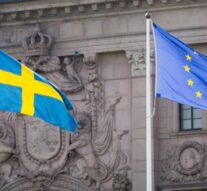
Prospects of the Swedish EU Presidency
Economy 15 January 2023Estimated time of reading: ~ 2 minutes
Sweden overtook the EU Council Presidency in the first half of the 2023. There are in total four priorities of the Swedish presidency over the EU: Security-unity, Competitiveness, Green & energy transitions, Democratic values and the rule of law – our foundation. Three of these four are (in)directly related to economic affairs. What will the Swedish Presidency over the 27 bloc bring?
The ongoing war in Ukraine and its immediate consequences are of paramount importance and require immediate political attention. However, it is also crucial to simultaneously address efforts to drive economic growth in order to address long-term challenges facing Europe. The Swedish Presidency priority program claims that the EU’s economic output, which is closely tied to the single market and global trade opportunities, is essential for maintaining the strength, resilience, and global standing of the continent.
The benefits of operating within the largest single market in the world and competing effectively on the global stage are vital for driving economic growth, wealth, and welfare in Europe, as well as its international standing. The EU must continue to create the best possible conditions for a healthy and open economy based on free competition, private investment and successful digitalization. The Swedish Presidency plans to make European competitiveness a top priority by promoting a coordinated approach to this issue.
The current state of the art of EU’s economy
The EU economy continued to grow at a strong pace during the first half of 2022, driven by the reopening of businesses and industries. Despite a predicted decline in the fourth quarter, real GDP growth in the EU is expected to reach 3.3% for the year as a whole (3.2% in the Eurozone), surpassing the predictions in the European Commission’s Summer Interim Forecast (2022b). The upward revision of 0.6 percentage points is a result of stronger momentum in the first quarter of 2022 and unexpected growth in the second quarter.
After the expected decline in the winter, growth is expected to resume gradually starting in spring 2023 as inflation eases its impact on the economy. However, with ongoing challenges still impeding demand, the EU economy is anticipated to experience only modest growth, gaining momentum towards the end of 2023. Overall, annual GDP growth for 2023 is projected to be a modest but still positive 0.3% in the EU and the Eurozone, significantly lower than expected in the Summer Interim Forecast. For 2024, GDP is projected to grow at 1.6% in the EU (1.5% in the Eurozone).
The projection for inflation has been revised upward significantly for 2022 and 2023 due to higher-than-anticipated inflation readings. Additionally, high energy prices continue to influence the prices of core goods and services. As price pressures become more widespread, they are expected to be more persistent. In the EU, HICP inflation is now predicted to average 9.3% in 2022, before decreasing to a still high 7.0% in 2023. In the Eurozone, inflation is projected at 8.5% in 2022 and 6.1% in 2023. For 2024, a moderation to 3.0% in the EU and 2.6% in the Eurozone is expected. These projections remain uncertain, and the risks are skewed towards negative outcomes as the potential for further disruptions caused by Russia’s invasion of Ukraine remains a possibility.
It seems that the programs of the EU presidency have become shorter and more superficial over time compared to those of the first decade of this century. Furthermore, it also seems that the very idea of the presidency of the European Union is beginning to lose its importance, taking into account both the internal institutional changes within the EU and the complexity of the geopolitical situation in the system of international relations.
Written by: Nenad Stekić


